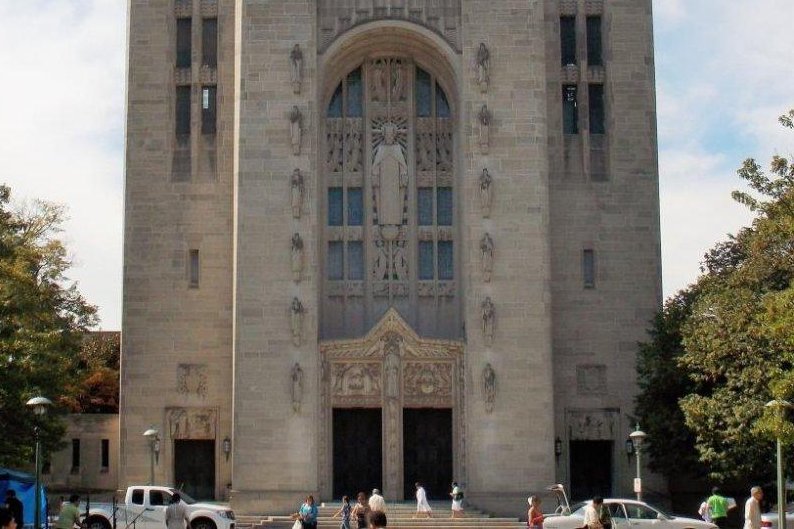By Matt Bernardini

Publisher Rupert Murdoch can be forced to testify in Dominon's defamation suit against Fox News, a Delaware judge ruled on Wednesday.
File photo by Ray Stubblebine/UPI | License Photo
April 5 (UPI) -- Fox Corporation executives Rupert and Lachlan Murdoch must testify on the witness stand if called to do so, in this month's defamation trial brought by Dominion Voting Systems, a Delaware judge ruled Wednesday.
If Dominion subpoenas the Murdochs they would need to show up at the courthouse and take the witness stand, Delaware Superior Court Judge Eric Davis said. Dominion has sued Fox for $1.6 billion, saying it was defamed when the network said that its voting systems manipulated the election results.
Fox had tried to block them from testifying, saying their testimony wasn't necessary, but Davis disagreed.
"Fox and Dominion have made these four parties very relevant," Davis said during a hearing on Wednesday, according to CNBC. "It's not the corporation that raises its hand on the stand, it's their officers and directors that raise their hand on the stand."
April 5 (UPI) -- Fox Corporation executives Rupert and Lachlan Murdoch must testify on the witness stand if called to do so, in this month's defamation trial brought by Dominion Voting Systems, a Delaware judge ruled Wednesday.
If Dominion subpoenas the Murdochs they would need to show up at the courthouse and take the witness stand, Delaware Superior Court Judge Eric Davis said. Dominion has sued Fox for $1.6 billion, saying it was defamed when the network said that its voting systems manipulated the election results.
Fox had tried to block them from testifying, saying their testimony wasn't necessary, but Davis disagreed.
"Fox and Dominion have made these four parties very relevant," Davis said during a hearing on Wednesday, according to CNBC. "It's not the corporation that raises its hand on the stand, it's their officers and directors that raise their hand on the stand."
Judge says Dominion's defamation suit against Fox News can begin in April
"So if Dominion wants to bring them in live, they need to do a trial subpoena and I would not quash it. I would compel them to come," Davis added on Wednesday.
Last week Davis denied Fox's attempts to dismiss the lawsuit, meaning that the case will go to trial this month.
Davis ruled that the statements that Fox News made were false. It will be up to a jury to decide whether or not Fox News acted in "actual malice," meaning it knowingly pushed false information
"The evidence developed in this civil proceeding demonstrates that [it is] CRYSTAL clear that none of the statements relating to Dominion about the 2020 election are true," Davis wrote in his ruling on Friday.
Dominion has said its reputation was damaged when Fox News aired claims that tied it to the late leftist Venezuelan President Hugo Chávez, paid kickbacks to politicians, and a "rigged" presidential election.
In a court filing last month, text messages were published by star hosts for Fox News, including Tucker Carlson, Sean Hannity and Laura Ingraham. The text messages show the host privately disparaging former President Donald Trump and his claims of voter fraud.
"So if Dominion wants to bring them in live, they need to do a trial subpoena and I would not quash it. I would compel them to come," Davis added on Wednesday.
Last week Davis denied Fox's attempts to dismiss the lawsuit, meaning that the case will go to trial this month.
Davis ruled that the statements that Fox News made were false. It will be up to a jury to decide whether or not Fox News acted in "actual malice," meaning it knowingly pushed false information
"The evidence developed in this civil proceeding demonstrates that [it is] CRYSTAL clear that none of the statements relating to Dominion about the 2020 election are true," Davis wrote in his ruling on Friday.
Dominion has said its reputation was damaged when Fox News aired claims that tied it to the late leftist Venezuelan President Hugo Chávez, paid kickbacks to politicians, and a "rigged" presidential election.
In a court filing last month, text messages were published by star hosts for Fox News, including Tucker Carlson, Sean Hannity and Laura Ingraham. The text messages show the host privately disparaging former President Donald Trump and his claims of voter fraud.




.png)
.png)


.png)






